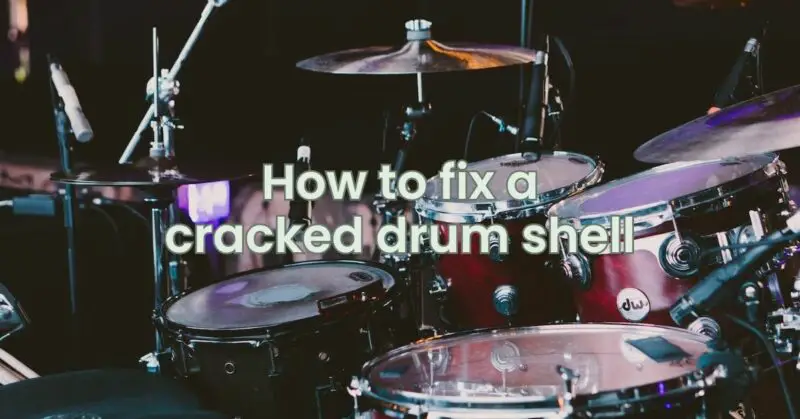Drums are the heartbeat of music, producing captivating rhythms and powerful beats. However, with time and use, drum shells can develop cracks that affect their sound quality and structural integrity. Fixing a cracked drum shell is a task that requires patience, precision, and the right tools. In this article, we’ll guide you through the steps to effectively repair a cracked drum shell, restoring its functionality and preserving its musical magic.
Assessing the Damage
- Inspect the Crack: Carefully examine the crack in the drum shell. Determine its length, depth, and location. A small surface crack might not require extensive repair, while a larger crack that compromises the structural integrity demands immediate attention.
- Evaluate the Material: Drum shells are commonly made from materials such as wood, acrylic, or metal. The repair approach might vary depending on the material.
Repairing a Cracked Drum Shell
For Wood Drum Shells:
- Materials Needed:
- Wood glue (recommended: wood glue designed for musical instruments)
- Clamps
- Sandpaper
- Damp cloth
- Preparation:
- Clean the cracked area with a damp cloth to remove any dust or debris.
- If the crack is extensive, consider removing the drum head and hardware to access the shell fully.
- Applying Glue:
- Apply a thin layer of wood glue along the crack. Ensure the glue is spread evenly and fills the crack.
- Clamping:
- Gently press the cracked sections together.
- Place clamps around the shell to hold the cracked parts firmly in place while the glue dries. Use scrap wood or padding to protect the shell’s finish from the clamps.
- Drying Time:
- Allow the glue to dry for the recommended time as specified by the manufacturer. This is usually several hours to ensure a strong bond.
- Sanding and Finishing:
- Once the glue is completely dry, carefully remove the clamps.
- Use fine-grit sandpaper to smooth out any excess glue and to blend the repaired area with the rest of the shell’s surface.
For Acrylic or Metal Drum Shells:
- Materials Needed:
- Acrylic cement (for acrylic shells) or epoxy adhesive (for metal shells)
- Clamps
- Sandpaper
- Damp cloth
- Preparation:
- Clean the cracked area with a damp cloth to remove any dust or debris.
- If possible, remove the drum head and hardware to access the shell completely.
- Applying Adhesive:
- For acrylic shells, apply acrylic cement along the crack. For metal shells, apply epoxy adhesive.
- Follow the manufacturer’s instructions for application.
- Clamping:
- Gently press the cracked sections together.
- Place clamps around the shell to hold the cracked parts firmly in place while the adhesive cures. Use scrap material or padding to prevent damage.
- Curing Time:
- Allow the adhesive to cure according to the manufacturer’s instructions. This can take several hours or longer.
- Sanding and Finishing:
- After the adhesive has fully cured, remove the clamps.
- Use fine-grit sandpaper to smooth out any excess adhesive and to blend the repaired area with the rest of the shell’s surface.
Conclusion
Fixing a cracked drum shell requires a careful and methodical approach to ensure a strong and lasting repair. Whether your drum shell is made of wood, acrylic, or metal, the key is to properly clean the cracked area, apply the appropriate adhesive, and secure the cracked parts with clamps during the curing process. After completing the repair, be sure to sand the area for a smooth finish that seamlessly integrates with the rest of the shell’s surface. By following these steps, you can effectively restore the integrity of your drum shell, ensuring that it continues to produce the captivating rhythms that make drumming an art form cherished by musicians and listeners alike.


